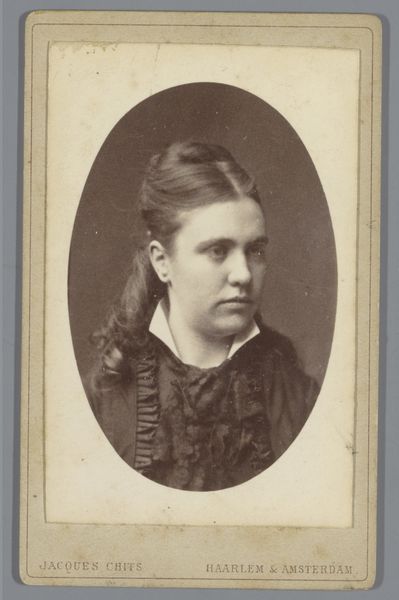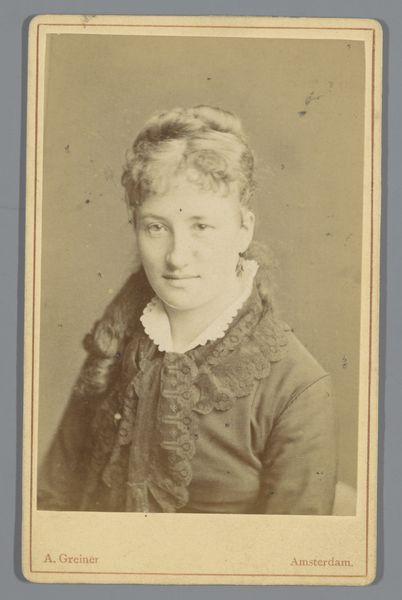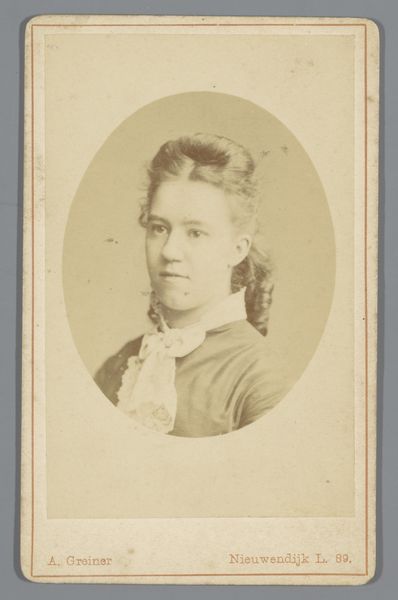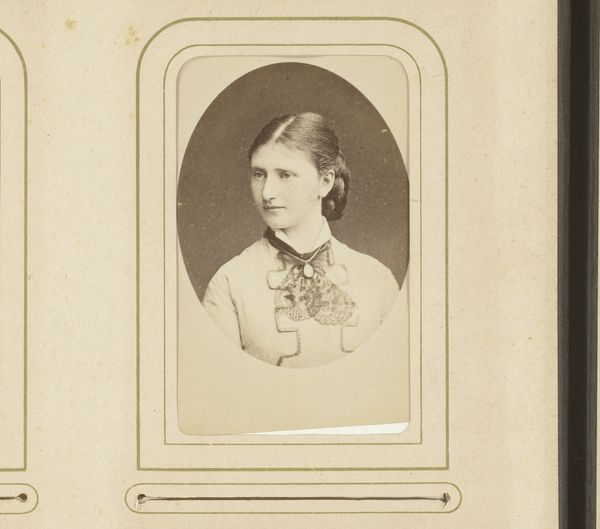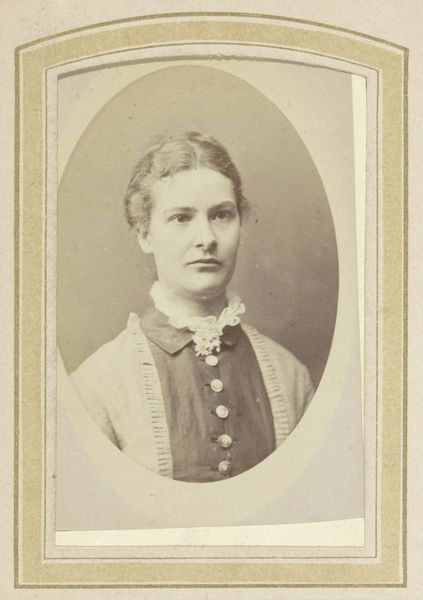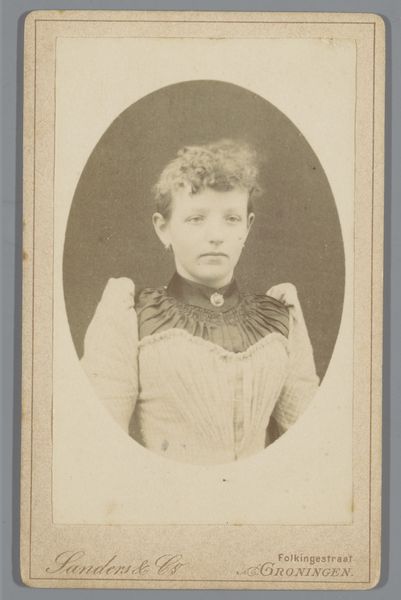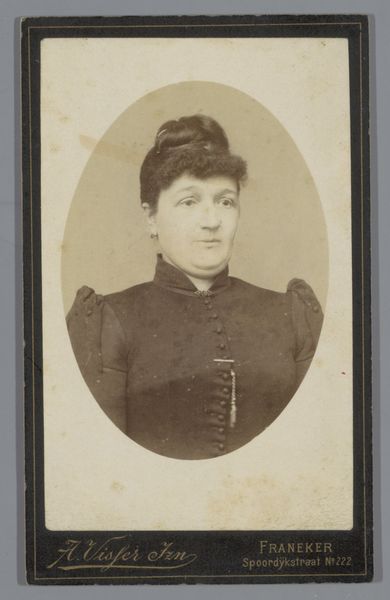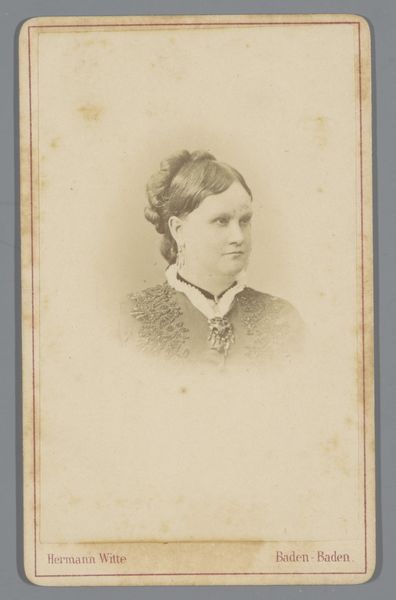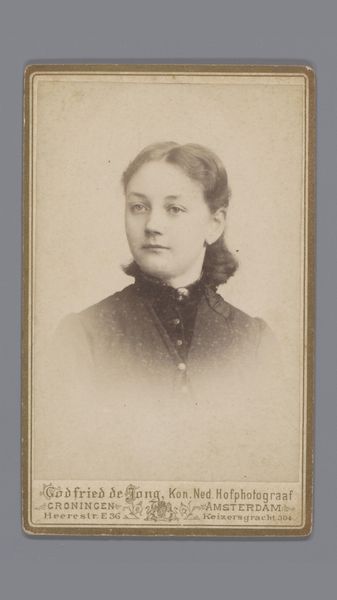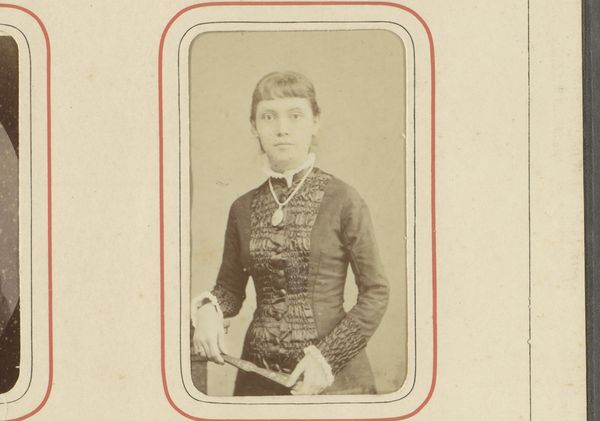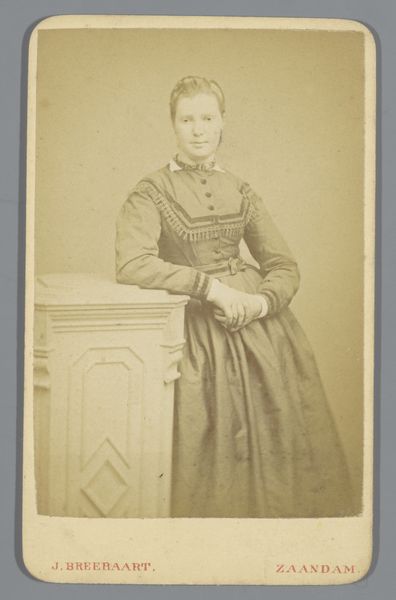
photography
#
portrait
#
photography
#
historical fashion
Dimensions: height 105 mm, width 63 mm
Copyright: Rijks Museum: Open Domain
Editor: This is a photograph titled "Portret van een onbekende vrouw," taken by Emil Thiedemann sometime between 1866 and 1885. It’s currently housed at the Rijksmuseum. I’m struck by the textures; from her coiled hair to the fabric of her dress, it makes me curious about photographic portraits in the 19th century. What catches your eye about it? Curator: Immediately, the tonal range and the strategic distribution of light are striking. Notice how the light delicately models the sitter's face, emphasizing her features and lending a three-dimensionality that defies the photograph’s inherent flatness. What do you make of the two vertical bands of dark fabric contrasted with the softer, lustrous dress material? Editor: I see what you mean about the light; it makes it look very sculptural, almost. The dark bands draw the eye down. Are they meant to create a sense of gravity or formality? Curator: Precisely. Those bands act as strong vertical elements, anchoring the composition. Their texture and opacity are visually distinct, framing the central form and leading the viewer’s eye in a controlled, deliberate manner. This considered arrangement prompts questions about Thiedemann’s intentions regarding formal composition and representation. Editor: That’s so interesting! So, the contrast isn't just about aesthetics, but about how the photograph directs our gaze and potentially conveys deeper meanings. Curator: Indeed. Considering the framing and limited depth of field, how do they influence our perception of the subject within the confined space of the photograph? Editor: I hadn't thought of it that way. I see how everything from the lighting to the composition is designed to guide us and invite interpretation beyond just a record of someone's appearance. Thanks for pointing all that out.
Comments
No comments
Be the first to comment and join the conversation on the ultimate creative platform.
